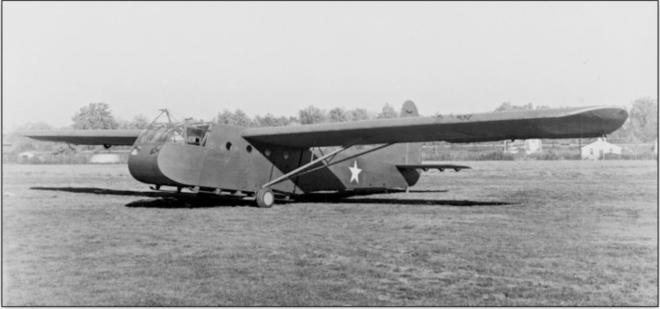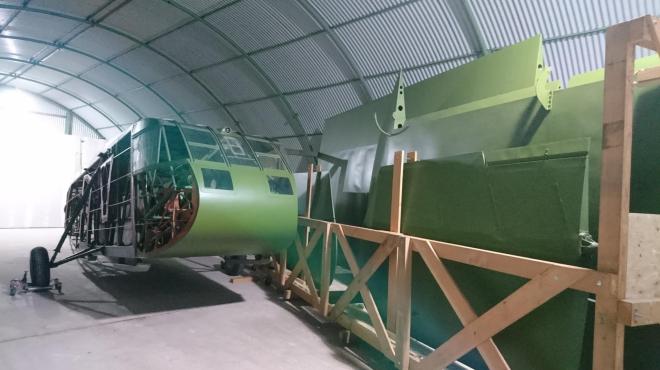A CG-4A Waco glider, acquired by Dumfries and Galloway Aviation Museum in 2018 with an NFA grant of £1,110
A CG-4A Waco (Hadrian) glider has been acquired from the Shropshire-based Assault Glider Trust (AGT) by Dumfries and Galloway Aviation Museum. The National Fund for Acquisitions helped with the cost of transporting the aircraft to Dumfries.
At Dumfries and Galloway Aviation Museum we are in the midst of expanding our Airborne Forces Collection. This enhanced collection will allow us to tell the story of our airborne forces from their inception during the Second World War to the present day. Part of this story was the use of the American-designed Waco glider by British Airborne Forces in Sicily and by the Chindits (special operations units of the British and Indian armies) in the Burma campaign. And of course, just to be very British, we renamed it The Hadrian.

Period picture of a Waco CG-4A Assault Glider, courtesy of Assault Glider Trust
The aircraft has been restored to a very high level by the staff at AGT with one side left open to allow people to see into the body of the aircraft and get a far greater insight into what it must have been like to fly within one of these remarkable aircraft. Sadly the AGT lost the rights to their site and have been looking for a good home for one of their most impressive exhibits. Dumfries and Galloway Aviation Museum was selected but then came one of the biggest challenges in the world of aviation heritage, how to get it here.
https://www.youtube.com/watch?v=5KAdcum72CM
It adds a whole new dimension to ‘object handling’ when the exhibit weighs 3,900 lbs, is 49ft long and you need to take the wings off to move it. Two trucks, some heavy lifting gear, and a very large frame to hold the wings later and the airframe was heading north.
The airframe is currently under cover in the new Airborne Forces Collection building at Dumfries and will be the centrepiece of our new exhibition scheduled to open for the 2020 season.

The CG-4A Waco (Hadrian) glider at Dumfries and Galloway Aviation Museum © Dumfries and Galloway Aviation Museum
Charlie Ewing
Director
Dumfries and Galloway Aviation Museum
http://www.dumfriesaviationmuseum.com/


